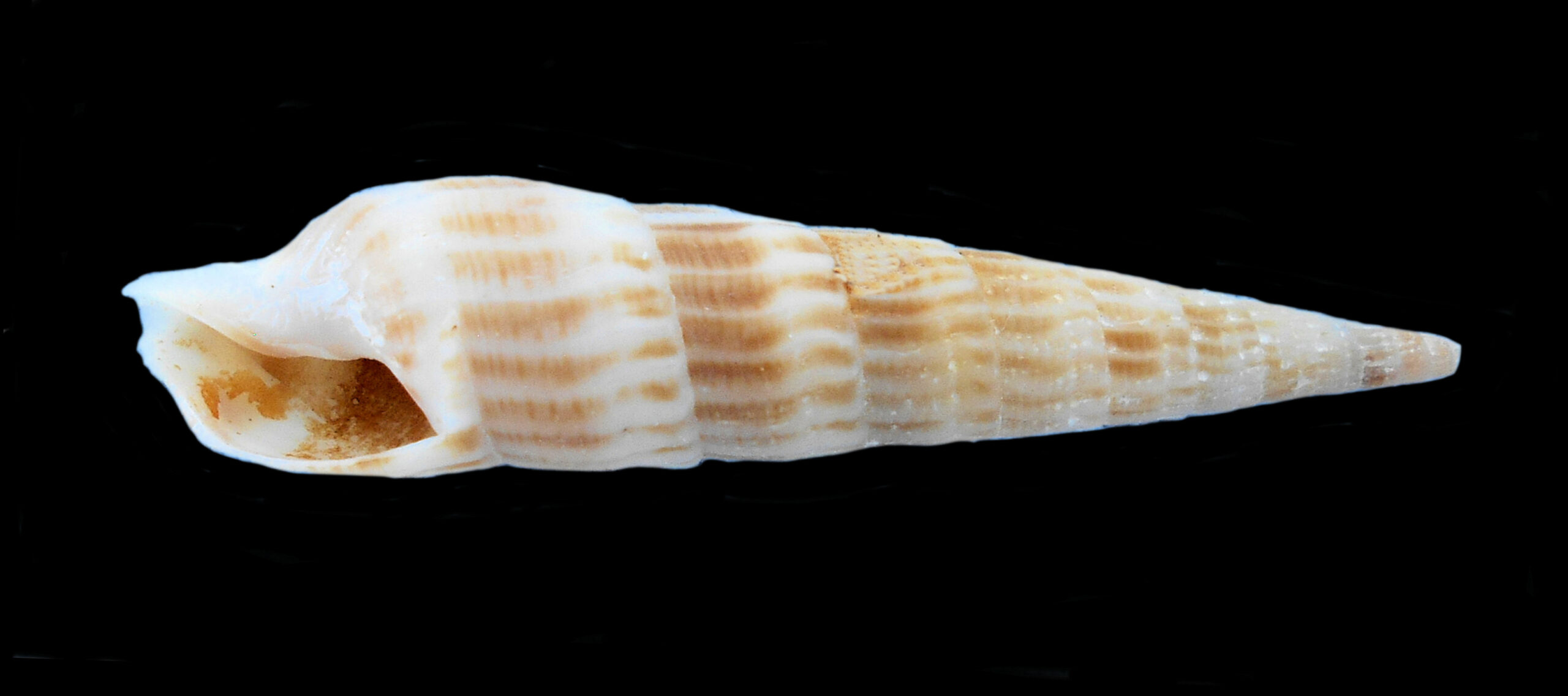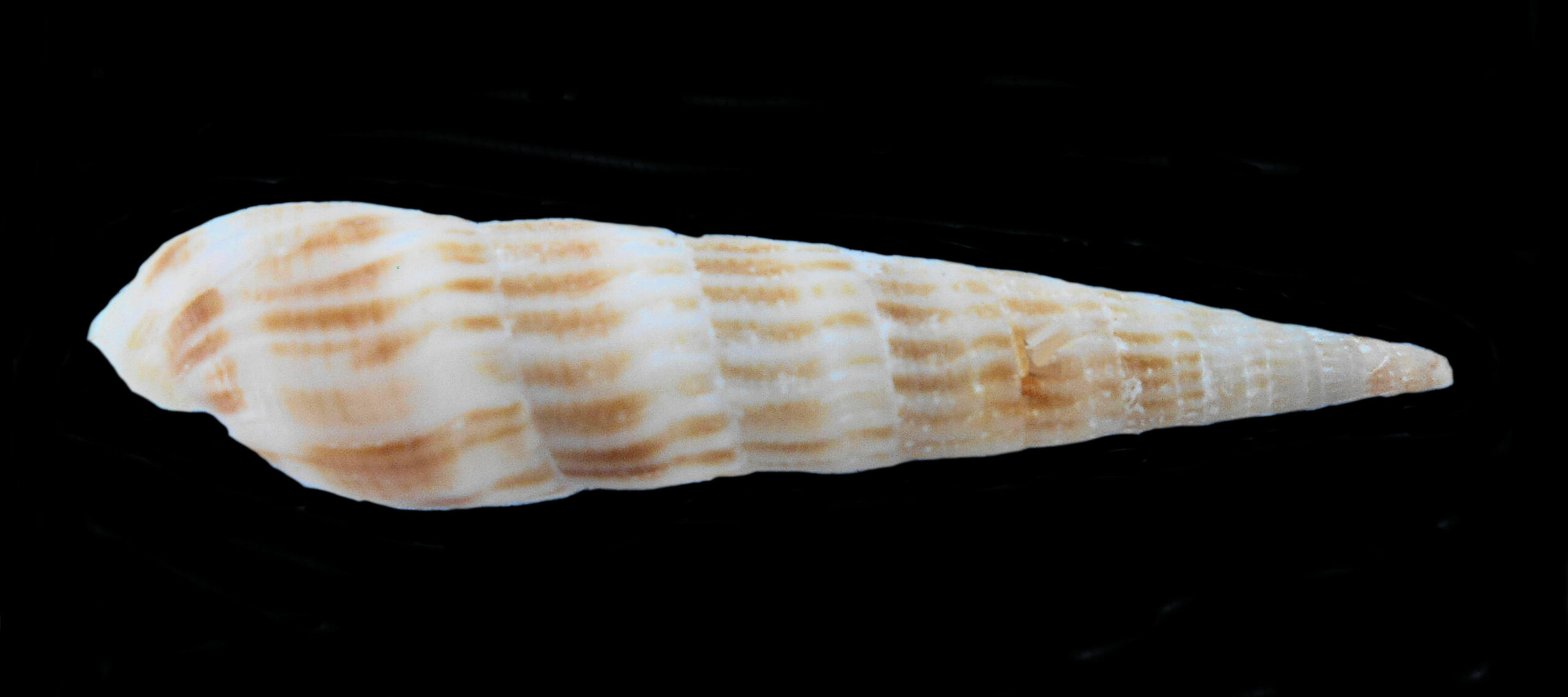Variegated Auger Shell, Terebra variegata

 Variegated Auger Shell, Terebra variegata. Shell collected from the beaches of the greater Los Cabos area, Baja California Sur, March 2008. Size: 4.4 cm (1.7 inches) x 0.9 cm (0.4 inches). Identification courtesy of Bob Hillis, Ivins, Utah.
Variegated Auger Shell, Terebra variegata. Shell collected from the beaches of the greater Los Cabos area, Baja California Sur, March 2008. Size: 4.4 cm (1.7 inches) x 0.9 cm (0.4 inches). Identification courtesy of Bob Hillis, Ivins, Utah.
The Variegated Auger, Terebra variegata (Gray, 1834), is a gastropod mollusk that is a member of the Terebridae Family of Augers and is the most common Auger in Baja California. The shell is characterized by having more than two dozen flat-sided whorls. The shells may be smooth or sculpted with fine spiral grooves and/or lengthwise ridges with four-sided aperture. The interior of the lip is curved, and may display two folds. The exterior of the shell is cream to grayish in color, with brown to dark brown sections of vertical bars and the external color pattern may show through on the interior. The Variegated Auger Shells reach a maximum of 10.0 cm (3.9 inches) in length and 2.0 cm (0.8 inches) in height.
Variegate Augers live in sand or muddy sand substrate and are found in the intertidal zone to depths up to 110 m (360 feet). They range from Magdalena Bay, Baja California Sur to Peru, including the Galapagos Islands; they are found throughout the Sea of Cortez.
Synonyms include Terebra africana, Terebra hupei, and Terebra melia.